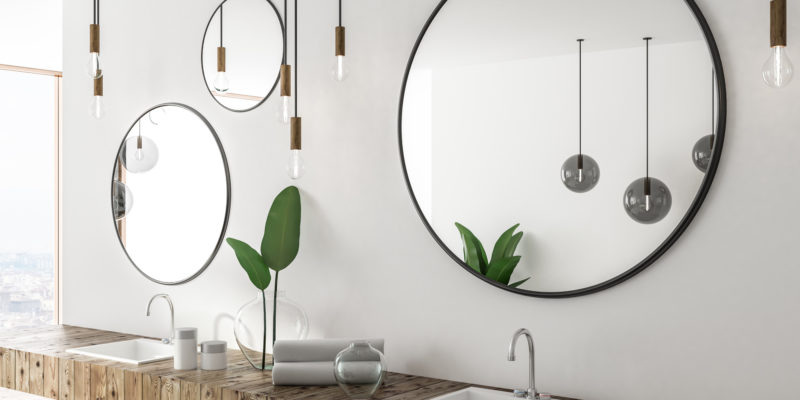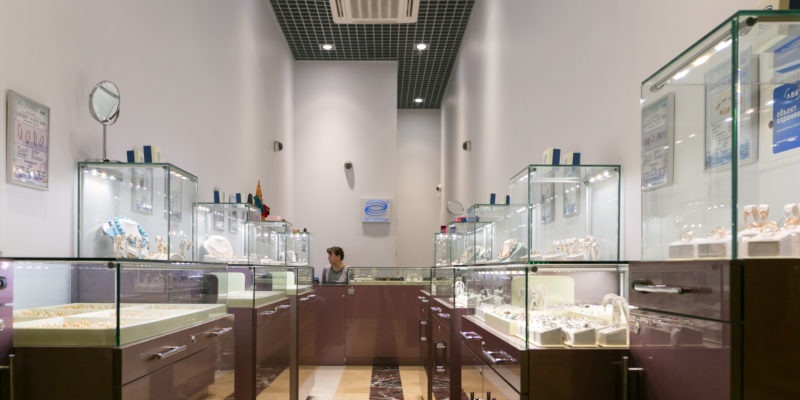When it comes to interior decoration, mirrors are secret stars. A carefully placed made-to-measure mirror can turn a dark, dingy space into a large, light one and visually triple it in size.
Their reflective surface creates a fantastic illusion that increases the size of any room. It will bounce around any light already in it (natural and artificial) and make it feel a lot lighter, brighter and much airier.
Even better, the way it reflects and repeats the space in front of it also adds depth, stretching out floors and easing apart walls to create a bigger, fresher room.
That’s why we thought we should show you some crafty tips on how to decorate with mirrors and turn your teeny compact rooms into big bright spaces. In this post we’ll share suggestions on how to use mirrors to make a room look bigger, how to raise your ceilings and lengthen your hallways, all through harnessing the magic of mirrors.
How do you enlarge a room with a mirror?
When trying to maximise space with a mirror, where to hang it is the important question.
One simple technique is to hoist your mirror high. If you’re worried about low ceilings cramping your space, angle mirrors at a slant between the wall and ceiling. This will elongate the gap between the floor and the ceiling, making your walls seem taller and your ceiling feel higher.
Another idea is to put one near or next to a window. This will help it catch the perfect amount of light, as well as reflect the world outside. Capturing beautiful, natural light inside will always make a room feel not just bigger, but happier too.
One word of caution though: avoid placing mirrors directly opposite a window. Direct sunlight on a reflective surface can get incredibly hot, and the temperature may actually damage your mirror, dulling the reflective surface and bleaching any decorative work.
How do you use a large mirror in a small space?
Small or awkward spaces will massively benefit from a big mirror. If you’ve got sloping ceilings, alcoves or protruding walls, then a custom-cut mirror perfectly slotted into an awkward spot will really open your room up. Not only will the mirror help capture the light, it creates an attractive feature that will complement the odd angles and turn them into features.
At KLG, we make custom mirrors cut to size, allowing you to tackle any troublesome spots. Whatever their shape or dimension, you can transform your crooked, confined spaces easily with a bespoke mirror.
Using Mirrors in a Narrow Hallway or Corridor
Adding a long, tall mirror to a hallway or corridor is a great way to make a narrow space feel wider and fresher. Don’t feel tied to just placing one at the end of the hall, as lengthening the room this way, may actually make it feel even narrower.
Instead, hang them on the longer side walls. Go for one lovely large one, or even multiple mirrors. Patchwork different sizes and shapes to create a ‘mirror gallery’ and you’ll manage to add style as well as space to your hallway.
Of course, there’s one final advantage to keeping mirrors in your hallway, or by your front door: it lets you have one last check of how you look before you leave the house!
Decorating with Mirrors
Mirrors aren’t just cunning tricksters primed for maximising your space, they also make a great decorative feature in their own right. Here are some tips for making the most of mirrors in your home:
- Turn your mirrors into a focal point
An ornate frame, intricate with scroll work, will add a feel of regal decadence to even the smallest space. While a simple driftwood frame stained white is a surefire shortcut to a bright, breezy beach house vibe.
- Try not to go overboard
Unfortunately, the answer to the question can you have too many mirrors in one room, is yes.
As wonderful and miraculous as they are, it is definitely possible to go too far when you’re decorating with mirrors. No more than two large mirrors, or a single wall with mirrors in one room are good rules of thumb. If you use too many, your rooms will actually start to feel busy, cluttered and really just shrink them right back down.
- Don’t be constrained by frames
Mirrors without frames can make arresting features and focal points. Sandblasting is a great way to add patterns or textures straight onto the surface of the mirror itself, it works particularly well in bath and wet rooms.
Alternatively, small, plain mirrors can be built up to make a mosaic wall. The clean lines of the unframed mirrors will give a minimalist edge to your decor, while the maximised light will help enlarge the space into a big, bright and modern space.
- Choose your rooms wisely
Another common worry people have about mirrors can be; is it bad to have mirrors in your bedroom?
While it isn’t bad as such, you should definitely take care where you place mirrors in rooms designated for sleeping. Avoid placing them where they will reflect the bed – it can be a little tacky and quite off-putting to wake every morning face-to-face with your sleep-soaked self. A great alternative is to have it above the headboard, so you can choose when to admire your reflection and when to ignore it.
Think about where the morning sun will enter your room too, being awoken by sunlight reflected off a mirror isn’t always as fun as you’d hope it would be.
Mirrors are a fantastic interior design tool. A fail safe way to grow small box rooms into pleasurable spaces, and dingy hallways in bright, broad walkways. Whether it’s one with a statement frame, or a custom-cut extra-large mirror, hopefully this post has given you a couple of ideas on how you can use mirrors for maximum impact in your home.


